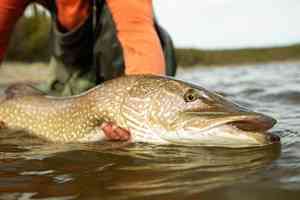Spey casting is easy. Honestly, it is. While it is true in any type of fly casting that the rod, and not the caster, should be carrying the workload, in two-handed casting this is ever more so. If you put the pieces of your cast together correctly, you can send line soaring across the river with a minimal amount of effort. Some would argue it is even easier to gain proficiency and mastery in two-hand casting than it is with one-hand casting. First-time spey casters, with proper instruction, can fairly readily huck a 75-80 foot cast on their first day. You won't find many, if any, first-time one handed casters that can make a claim even approaching this.
That said, while spey casting may be easier to learn and master than two-handed casting, it is also a heck of a lot easier to screw up. And it's incredibly easy to dig yourself into a rut. Blow your anchor, and you'll wreak havoc on the rest of your setup. Cut the corner on your sweep and you'll send out a limp, weak, crapfest of a cast. Drop your rod tip too low and you'll sap an enormous amount of power out of your cast. And that's just a few of the things you can screw up. The list goes on.
I'm familiar with all of these potential crash and burn points because I'm not much of a spey caster. In fairness to myself, when things are clicking, I'm actually fairly good at it. Unfortunately, I don't get to spend as much time doing it as I'd like and so I'm often plagued by many of the mistakes that newcomers to the world of two handed casting confront. The good news with all of these mistakes is that they're relatively easy to fix provided good feedback and a mental checklist.
The best source for that feedback is an instructor. But few and far between are anglers that can afford to take an instructor with them every time they head to the water. So it comes down to self-monitoring: identifying errors and knowing their fixes and remembering to implement them on the next cast.
Can the rod you choose to learn the craft with help you become a better caster, faster? Maybe. For one thing, it shouldn't be a dog. It needs to be a quality stick with good power and responsiveness in order to bear fruit from your efforts. But there are other things that make some rods better than others for beginners: price, action, versatility and so on. Redington's new-for-2016 CHROMER spey rod, thanks to several of these characteristics as well as one that is unique only to the CHROMER, maybe be one of the ideal candidates for stepping into the world of spey.
Approachable Price
At $399, Redington's CHROMER isn't exactly cheap. But there are few, if any, cheap entries into the world of two-handed casting. At just under $400, the CHROMER offers spey newcomers a price that most who've had their interest piqued by the many advantages and pleasures offered by two-hand casting can stomach. That is, as long as they are walking away with a quality rod that they can live and grow with for some time to come. And, for many of the reasons that follow, the CHROMER is assuredly that.

Capable, Powerful Rod
While the CHROMER may be ideal for beginners, that doesn't mean it is only suited to beginners. I know experienced spey casters that truly dig the CHROMER, and with good reason. The CHROMER spey models are rods that can be fished in almost any conditions and adapt well to a variety of casting styles and demands; floating work, sink tip work, scandi heads, skagit heads and so on are all comfortably within the CHROMER's wheelhouse. While it certainly isn't the most versatile spey rod I've fished, it is indeed versatile. And pretty powerful. Newcomers, I expect, will find that they're able to generate good line speed while experienced casters will be able to huck big casts with the CHROMER's deep bends.
Good Beginner's Tempo
The CHROMER is referred to by Redington — and repeatedly by folks that know a great, great deal more about spey casting than I do — as a fast action rod. I don't buy it. To me, the CHROMER sits squarely at the medium end of medium-fast. Much of this has to do with head choice, as the CHROMER definitely doesn't like to be overweighted, but to me the rod has a medium-fast tempo that is an asset to beginner casters.
One of the cardinal sins in two-handed casting is rushing things. Head to the water with an instructor and when things aren't working, you'll likely be berated with chants of "slow down ... slow down ... slow down" until the point where you're contemplating turning around and sticking the rod tip through his or her eye. But keeping the correct, slower tempo is indeed crucial and a rod that bends a bit more — but recovers quickly enough to still generate quick line speeds — as the CHROMER does will force you to wait for it if you want to load it and generate power in the cast.
Unique Handle Design
Like Redington's Vapen, the CHROMER caught eyes when it was first announced thanks to its polymer grip. Much like the Vapen, it has since been both praised and vilified for that specific reason. For my money, the polymer grip is a bigger win on the CHROMER than it was on the VAPEN. That said, Redington's use of the polymer grip is considerably different here with the CHROMER.
The CHROMER's designer, Paul Richardson, implemented the polymer grip (which is a bit softer on the CHROMER than it is on the Vapen) at the very top and the very bottom of the handle. At the bottom, you've got very much a Vapen implementation — the polymer coating offers better grip and cushioning. At the top, the polymer coating serves an altogether different purpose. In fact, two of them. Here, the grip serves as a cue for hand placement and aids in pinching the running line against the handle of the rod.

The latter of these two benefits will be a boon to any spey caster as it aids in pinching all types of running lines, but particularly so with mono or hybrid-mono running lines, against the handle — something that happens to be a inescapable requirement of two-handed casting. Add in cold temperatures and/or gloved hands and this becomes an even bigger asset.
For beginners, the bigger asset here however is the tactical reminder that the polymer grip provides regarding the placement of your upper hand. Another cardinal sin committed by greenhorn spey casters is dropping your top hand down too low on the handle. It's a big power suck. But folks that have been one-hand casting for a while don't want to put their hand at the top of their rod handle, because doing so is counter-productive in single hand casting. Beginners often struggle with keeping their top hand placed properly and without a spectator there to remind them, will often drop their top hand down the handle without even being aware of it. Some struggle greatly with this. With the CHROMER however, you can feel it when you drop your hand, triggering you to get your top hand in proper position before you even set your initial anchor.
Final Word
Redington's CHROMER is a solid rod that will likely satisfy even advanced spey casters. It's a finely finished, well-crafted rod with good recovery and power. No, it won't outfish many rods that are two or three times its price; but why would you expect it to? While the CHROMER won't yell at you on the river to tell you that you trunked your swivel, its tempo and unique grip will serve beginner casters well by offering feedback that are crucial to self-monitoring and fixing mistakes while on the river. When, and if, those folks decide they need to upgrade to a $1,000 stick — they can use some of the cash they saved on follow-up spey casting lessons to do so.
































Comments